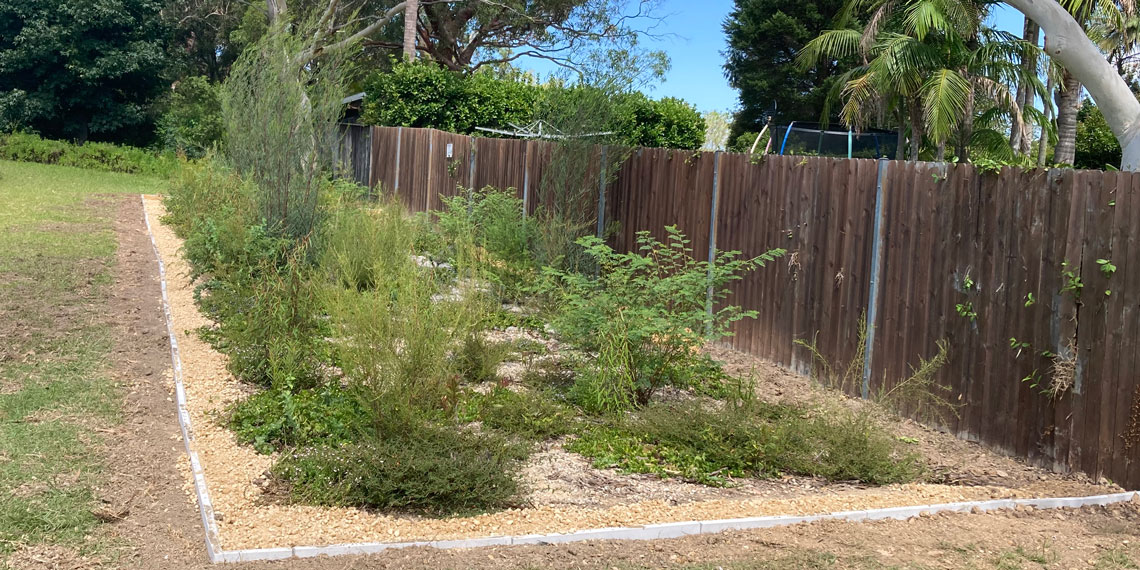Woody meadows

Council is trialling a new initiative called a 'woody meadow'
Typical low maintenance plantings have low diversity, visual appeal and function. To improve the quality of low input landscapes and make our cities more liveable, we are trialling woody meadows as a low-cost and resilient alternative.
What is a woody meadow?
They are diverse and densely planted areas created with flowering native plants, specifically designed to improve the quality of urban landscapes. With their high number of flowers, they encourage insects, native bees, small birds and other wildlife.
The areas are maintained by coppicing (hard-pruning to 10-20cm) to promote flowering and create dense canopies to exclude weeds.
As well as being visually appealing woody meadows can reduce weed growth and maintenance costs for public land.
How has it been created?
In August 2023, Council staff and local volunteers planted 400 tube stock at Transmission Park, St Ives Chase to create the first trial woody meadow. Plantings are developing well and volunteers have been providing watering, weeding and replacement plantings ongoing.
The University of Melbourne are creating a network of woody meadows across cities in railway sidings, roadsides and parks to expand our knowledge and experience in growing woody meadows in cities and demonstrate their value and success.
Download the plant list here(PDF, 76KB)
FAQs
Are woody meadows being used for bush regeneration?
No. The purpose of a woody meadow is to work as an alternative to standard urban plantings that usually consist of very few and often exotic species; think flower beds, verges and isolated patches of grass. It is not designed to be used in bush regeneration and will not be used in our bushland areas.
Can woody meadows be used to conserve threatened plant communities?
Conservation is not the aim of woody meadows. Woody meadows are designed to provide a visually appealing, native alternative to existing urban planting schemes that also provide habitat for native pollinators. Although woody meadows will contain plants of local provenance as a priority, they will not be designed to mimic Ku-ring-gai’s Endangered Ecological Communities such as Blue Gum High Forest, Sydney Turpentine Ironbark Forest, or Duffy’s Forest. For areas where these communities exist, traditional bush regeneration techniques would be used.
Can woody meadows be used in my garden?
Though woody meadows are not designed for gardens, many of the principles can be applied to one. Woody meadows are based on concentrated plantings that are maintained by coppicing, which creates a dense matrix of vegetation. Keep in mind that a woody meadow usually consists of a raised bed, or a small (20cm depth) excavation, filled with an inorganic planting medium such as crushed sandstone, therefore anyone considering a woody meadow should keep that in mind.
Can I get the plants used in your woody meadows?
Yes! All the plants used in our woody meadows are grown at our local nursery in St Ives and are available from the Wildflower Garden Nursery.
Get involved
The program is still in its infancy, but we hope to grow the number of sites. For any future sites there will be opportunities to get involved with planting days, as well as ongoing support through watering, weeding and coppicing. If you’d like to be involved, or have a suggestion for a location, please get in touch with us at wildthings@krg.nsw.gov.au
For more information visit our project partner The University of Melbourne.